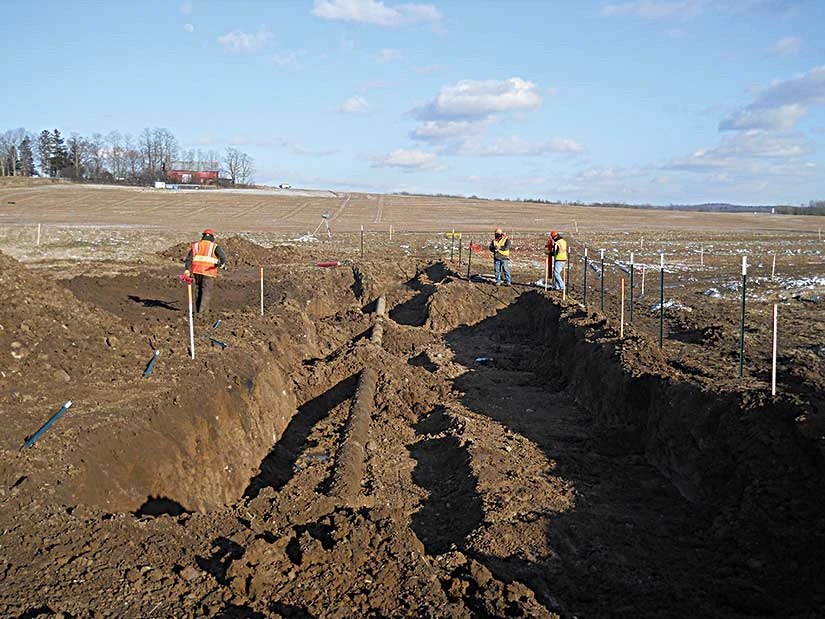Petroleum Pipeline Release
Client Challenge
An effective response to a pipeline release requires extensive pre-planning, clear lines of communication, and a team that is well-trained and ready to act with the right set of tools. When a local farmer struck a high-pressure underground petroleum pipeline while laying a tile drainage system, the midstream pipeline owner initiated its response team, including GES as prime environmental consultant.
GES Solution
Once the initial fire and rescue responders deemed the area safe from immediate explosion hazards, GES assumed on-site responsibility for rapid response and hazard mitigation activities. An expedited site assessment was required to assess the magnitude and extent of the impacts from the spill, and to implement the appropriate remedial plan. GES was responsible for coordinating and communicating with state and local environmental and health agencies. Protecting residential water supplies was a primary focus. Initial services included strategy development; oversight and documentation of all product recovery efforts; residential property inspections and private well sampling; and mitigation of impacts to nearby streams. Residential water treatment systems were installed as precautionary measures where warranted.
An expedited site investigation, using membrane interface probe (MIP) and soil conductivity (SC) technology, allowed GES to fine tune an effective remedial soil excavation plan. The MIP investigation provided high-resolution data, along with two and three-dimensional visualization graphics, to delineate the vertical and horizontal extents of the contaminant distribution. This output enabled the regulators to more quickly review and approve the site assessment report and focused remedial action plan, including sampling, well installation, and soil excavation.
GES implemented the remedial actions and managed health and safety and waste management functions, including contractor oversight. More than 4,000 gallons of product was recovered and 22,000 tons of soil removed during the remediation phase. Remediation was complete within a year and final spill closure approved the following year, with the concurrence of state and county health departments. The use of residential water treatment systems was discontinued and the site was returned to productive use as farmland.
Client Value
GES’ rapid response plan − including communication protocol, management of prequalified internal and subcontracted resources, regulatory interface, health and safety planning, and the use of the LPS behavioral management system for all team members − facilitated a safe and expeditious response. The application of innovative MIP/SC technology provided the ability to pursue the most effective remedial approach, reducing client liability and speeding property remediation and restoration.
